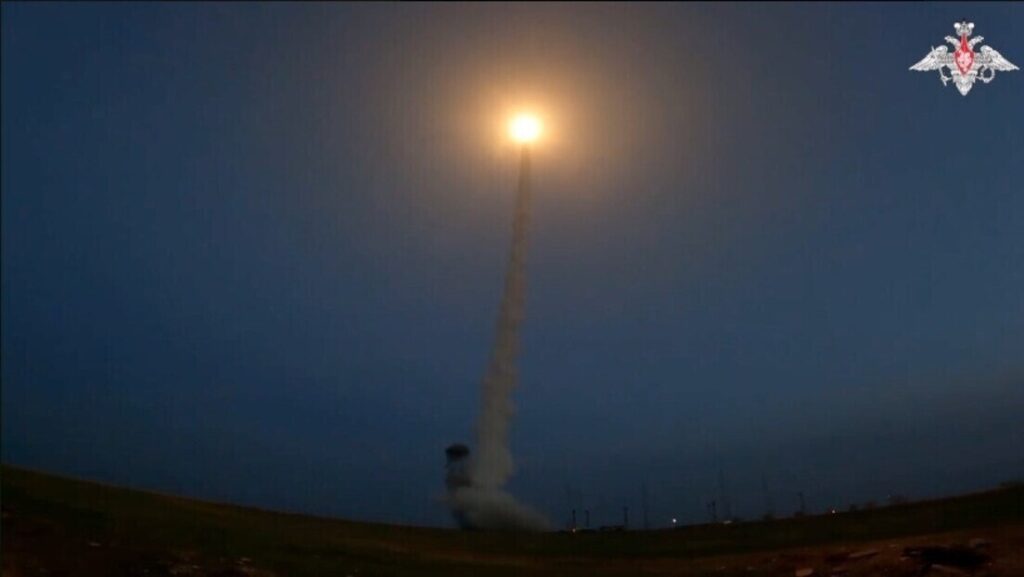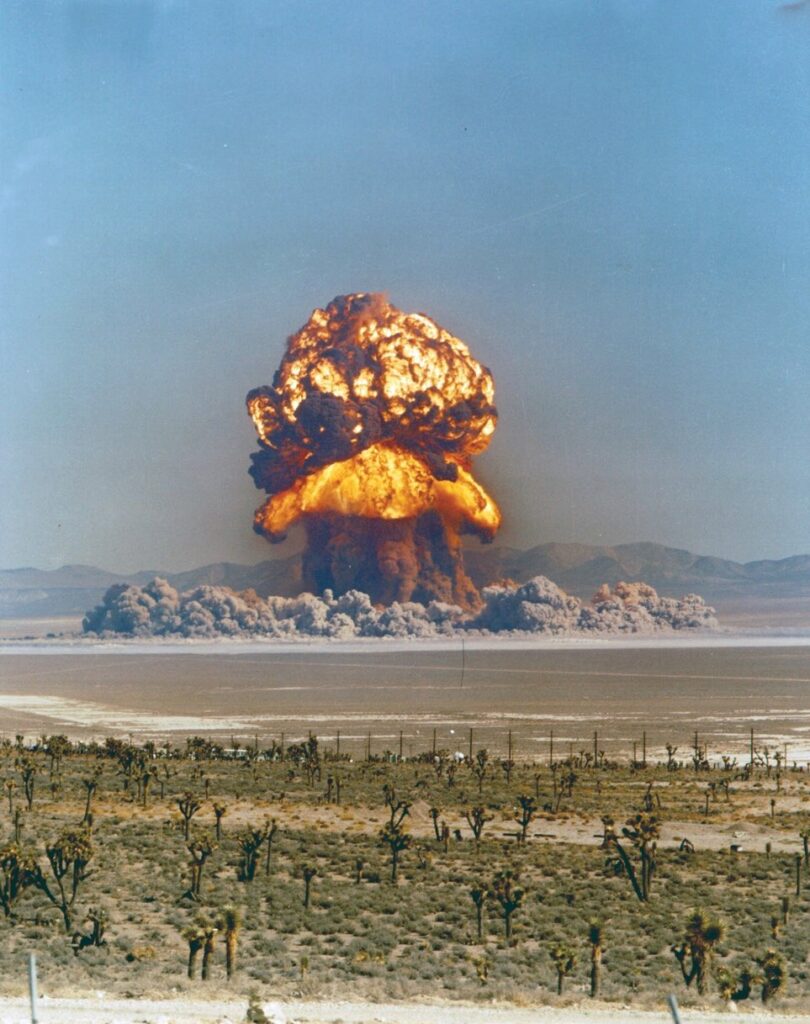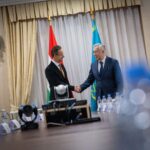The Ukrainian UAV strikes on Russian airfields housing strategic bombers mark a significant evolution in the war’s trajectory, highlighting Kyiv’s capacity to reach deep into Russian territory. U.S. National Security advisor Gen. (Ret.) Keith Kellogg has characterized these developments as legitimate wartime tactics, subtly reflecting a shift in Washington’s willingness to tolerate Ukrainian escalation.
1. Kellogg’s Reaction: Signaling a Hardening U.S. Posture
General Keith Kellogg, speaking in unofficial or advisory capacities, has supported the idea that Ukraine must bring the war home to Russia to alter the strategic balance. While not formally representing the White House, his views often echo those of more hawkish factions in Washington, especially former Trump-era officials.
Kellogg’s position suggests that:
- Strikes on Russian airbases are a necessary escalation to force Russian strategic recalculation.
- The White House tolerates such strikes as long as they don’t drag NATO directly into the conflict.
- This reflects growing U.S. disillusionment with de-escalatory diplomacy, which has failed to stop Russian aggression.
Retired General Keith Kellogg, a national security advisor to former Vice President Mike Pence and a prominent Republican voice on U.S. defense issues, expressed concern over escalation following Ukraine’s UAV strike on Russian airfields because such attacks targeted elements of Russia’s nuclear triad infrastructure — specifically, strategic bomber bases like Engels-2, which house nuclear-capable Tu-95 and Tu-160 aircraft.
Here’s a breakdown of why Kellogg’s concern is serious and strategic:
1. Strategic Bombers = Part of the Nuclear Triad
- Russia’s nuclear triad consists of land-based ICBMs, submarine-launched missiles, and strategic bombers.
- Engels-2 Air Base is home to Tu-95MS and Tu-160 bombers, which are nuclear-capable — even if not currently armed with nuclear warheads.
- Any strike on these assets can be interpreted in Moscow as a threat to nuclear deterrence stability, which is a red line in Russian strategic doctrine.
2. Fear of Russian Doctrinal Overreaction
- Russian nuclear doctrine allows for escalation in response to perceived existential threats, including strikes on nuclear infrastructure.
- Kellogg likely fears that such UAV attacks, even if conventional, could trigger panic in the Russian command or be used as a pretext for limited nuclear posturing.
3. Risk of Escalation Beyond Ukraine
- Strategic bomber strikes from deep within Russia mean that Ukraine’s escalatory response penetrated sovereign Russian territory and targeted rear military infrastructure.
- Kellogg understands that Russia could interpret this as Western-enabled aggression, potentially prompting retaliation not just against Ukraine, but NATO’s periphery or satellites.
4. Signals to U.S. Deterrence Credibility
- If the U.S. is seen as complicit or passive in the face of Ukrainian attacks on strategic nuclear elements, Moscow could exploit that as proof of Washington’s recklessness.
- Kellogg’s statement may be a strategic message to Ukrainian and U.S. leadership: “Be careful not to give Russia an excuse to go nuclear — especially in a theater already strained.”
5. Managing Global Nuclear Stability
- Kellogg’s background in Cold War-era command and control of nuclear assets makes him sensitive to escalation thresholds.
- His concern reflects a broader U.S. security establishment belief that nuclear stability must not be destabilized through tactical advantage, especially by non-nuclear allies.
Kellogg’s reaction isn’t about doubting Ukraine’s right to self-defense. It reflects a strategic calculus: even if Ukraine’s strike is militarily effective, targeting nuclear triad infrastructure risks Russian overreaction, miscalculation, or doctrinal escalation. His message is a warning — not about Ukrainian capability, but about the fine line between escalation and uncontrolled conflict.
2. Russian Strategic Bombers at Risk: Consequences of the UAV Strikes
a. Effectiveness of the UAV Strikes
- Ukrainian drones have successfully struck airbases like Engels-2 and Shaikovka, damaging or destroying Tu-95 and Tu-22M3 bombers — crucial platforms for cruise missile strikes.
- The attacks expose vulnerabilities in Russian air defense, particularly in the rear,
- weakening the image of Russia’s invincibility.
b. Military Consequences
- These bombers are vital to Russian long-range attacks on Ukrainian infrastructure.
- Their exposure forces Russia to disperse aircraft or pull them farther from the front, complicating logistics and sortie rates.
- The strikes impose psychological costs — Russian pilots and commanders now face danger even on home soil.
While the Kremlin threatens retaliation, the actual risk of strategic bomber strikes on European NATO targets remains extremely low, for several reasons:
- NATO deterrence remains intact. Any strike on NATO would trigger Article 5, a scenario Russia cannot afford.
- Russian resources are overstretched — moving bombers westward for deterrence would further expose them.
- Russia is unlikely to risk its most prestigious systems (strategic bombers) in an offensive role with high loss probability.
Probability Assessment:
Russia striking Europe with strategic bombers in response to Ukrainian UAV strikes: <5%
4. Why the United States Is Interested in Russian Humiliation
The U.S. has strategic interests in seeing Russia weakened without becoming directly involved. The humiliation of Russian forces on the battlefield aligns with several key objectives:
a. Deterring Future Aggression
- A defeated and demoralized Russia is less likely to challenge NATO or invade neighbors again in the near future.
- It provides a long-term security dividend in Europe.
b. Message to China and Others
- Russian failure serves as a powerful deterrent to China, especially regarding Taiwan.
- It reasserts the effectiveness of Western coalition-building, sanctions, and arms transfers.
c. Cost-Effective Containment
- Humiliating Russia via Ukrainian resistance is far cheaper than direct military confrontation.
- The U.S. depletes Russian capabilities without deploying American troops.
5. Policy Options Going Forward
To sustain pressure while minimizing global escalation risk, the White House may:
- Continue selective weapons transfers, including longer-range systems.
- Avoid public approval of strikes deep inside Russia, maintaining plausible deniability.
- Support intelligence operations discreetly, particularly in targeting Russian logistics and infrastructure.
- Enhance NATO readiness without provoking direct confrontation.
Kellogg’s reaction and broader U.S. attitudes indicate growing acceptance — and strategic exploitation — of Ukrainian strikes into Russia. These attacks degrade key Russian capabilities, erode morale, and limit Moscow’s offensive capacity. Despite nuclear threats and escalation rhetoric, Russia’s ability to retaliate against Europe remains limited. Meanwhile, Washington benefits from a proxy attrition model — seeing Ukraine humiliate Russia in a way that reshapes the global balance of power without incurring the costs of war directly.
The Ukrainian UAV strike has introduced a paradigm shift in the operational use of Russian strategic bombers, which were previously considered untouchable assets.
1. Forced Relocation and Dispersal
- Russia will likely relocate Tu-95 and Tu-22M3 bombers from vulnerable bases like Engels-2 to airfields deeper in Siberia or under heavier protection.
- This increases flight time, fuel consumption, and mission planning complexity, reducing the tempo of long-range cruise missile strikes on Ukraine.
2. Disrupted Maintenance and Readiness
- Damage to runways, hangars, and logistics hubs impedes regular servicing of aircraft, slowing sortie generation.
- Fear of follow-up UAV strikes will force Russia to keep aircraft on alert, reducing crew rest and sustainability.
3. Shift in Strike Doctrine
- The Kremlin may become more selective in the use of strategic bombers, reserving them for politically symbolic strikes rather than routine attacks.
- Increased reliance on tactical aircraft and missiles from mobile launchers could stretch already strained conventional forces.
4. Psychological and Command Fallout
- Pilots and ground crews are now aware that their bases are within the reach of the enemy.
- This may reduce morale and create hesitancy in high-risk operations, especially if follow-up drone attacks persist.
5. Technological and Budgetary Strain
- Russia may be forced to invest in additional air defense units for rear airfields, stretching resources from the front.
- Budget reallocation for base protection, drone countermeasures, and hardened shelters could slow other military modernization efforts.
Strategic Implication
The degradation of strategic aviation readiness impairs Russia’s ability to:
- Sustain large-scale, long-range air campaigns against Ukraine’s energy infrastructure.
- Conduct surprise strikes timed with ground offensives.
- Project air power as a coercive tool in the broader region.
As a result, Russia’s air-based deterrence weakens, allowing Ukraine — and its Western partners — more freedom to plan counteroffensives without the looming threat of immediate strategic retaliation from the air.
In this sensitive context — following Ukraine’s UAV strikes on Russian strategic bomber bases
key recommendations
to help Ukraine maximize its strategic advantage without provoking uncontrollable escalation:
1. Continue Strategic Pressure — But Below Escalation Threshold
- Ukraine should sustain attacks on strategic aviation assets, focusing on:
- Disabling runways, radar, fuel depots, and support infrastructure (not aircraft shelters).
- Targeting non-nuclear elements (e.g., conventional bombers used in strikes on Ukraine).
- Avoid direct targeting of nuclear command-and-control nodes or strategic missile silos, which could provoke a doctrinal Russian response.
2. Frame the Strikes as Defensive, Not Escalatory
- Diplomatically emphasize:
- That these strikes are in response to Russian attacks on civilians using those bombers.
- That Ukraine is not targeting nuclear capabilities, only conventional platforms.
- Coordinate with Western allies to maintain narrative dominance in international institutions (UN, IAEA, OSCE).
3. Deepen Intelligence Cooperation with the U.S. and NATO
- Ensure deconfliction mechanisms are in place to avoid unintentional escalation.
- Use U.S./NATO intelligence to select targets that avoid nuclear sensitivities.
- Share findings from the strikes to enhance allied assessments of Russian strategic capabilities.
4. Prepare for Russian Retaliation — Both Military and Hybrid
- Expect Russian responses in the form of:
- Mass missile strikes.
- Disinformation campaigns accusing Ukraine and the West of “nuclear aggression”.
- Possible escalation in the Black Sea or border zones.
- Reinforce air defense coverage, especially around major cities and energy infrastructure.
5. Push for Stronger Western Support
- Use the success of the UAV operation to:
- Argue for long-range missiles (e.g., ATACMS, Taurus) to neutralize Russia’s rear.
- Show Ukraine’s ability to strike deep — and safely — to justify continued aid.
- Stress that degrading Russia’s bomber force reduces mass-casualty risks for civilians and limits Moscow’s escalation leverage.
6. Avoid Symbolic or Psychological Strikes on Nuclear Icons
- Do not target symbolic assets like nuclear weapons museums, command bunkers, or nuclear-capable aircraft on display — even if militarily meaningless, they can provoke overreaction.
- The goal is to reduce Russia’s conventional strike power, not to provoke nuclear saber-rattling.
7. Coordinate Timing with Diplomatic and Sanctions Pressure
- Align further strikes with:
- Upcoming sanctions announcements.
- UN debates or international summits to reinforce the image of Ukraine as controlled, precise, and defensive.
- This limits Kremlin space to frame escalation as Ukrainian or Western aggression.
Summary Recommendation:Keep the pressure, but stay calibrated.Ukraine should continue disabling Russian long-range bomber capacity, but avoid direct threats to nuclear assets. With careful messaging, precise targeting, and Western coordination, Kyiv can degrade Russian power projection without handing Moscow an excuse for strategic escalation.


More on this story: Russia’s Nuclear Blackmail as a Tool to Pressure the West

More on this story: Kremlin Continues to Intimidate the West with Nuclear War Threats

More on this story: Strikes on medical facilities become part of Russia’s military strategy




